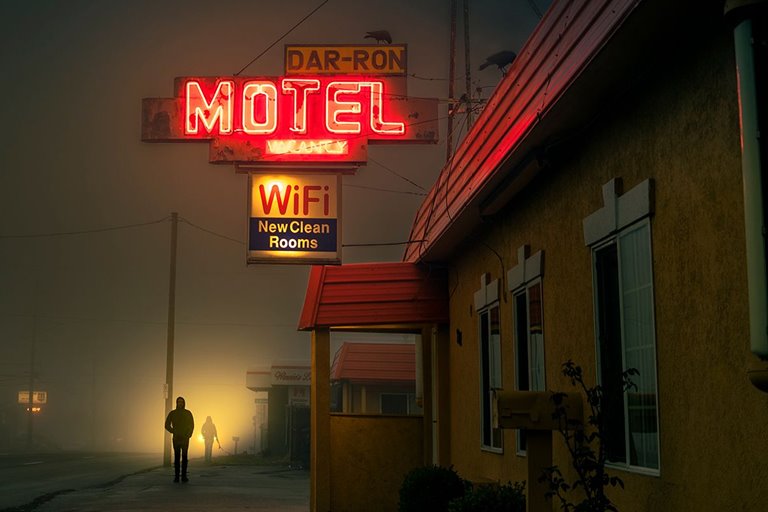What Is Street Photography; Everything We Need To Know To Get Started
Street Photography Is One Of The Most Fascinating And Challenging Genres Of Photography, The Most Interactive. Still, To Start Street Photography, You Have To Follow The Tips And Rules That We Have Discussed In This Article.
Street photography is one of the most challenging and, at the same time, fascinating genres of photography. Documenting people in everyday life and environment is not an easy task; Approaching and photographing strangers requires patience, hard work, and courage.
In this article, we will take a closer look at street photography and how it differs from other genres of photography.
Like sports photography, street photography requires quick reaction, and like travel photography, you need to hone your storytelling skills. You also need to combine the images in a way that appeals to the audience. If you think you are interested in this genre, join us in this article.
What is street photography?
In general, street photography is the recording of moments of life in public places and, contrary to its name, should not necessarily be done on the street. In general, there is still no precise definition of street photography and how to do it.
Street photography is a way to show the surroundings and communicate with this environment as a photographer. The street photographer filters what he sees, captures inspiring moments, and shares them with others.
Street photography does not necessarily require human subjects or should not be taken in a crowded city or market. Street photography can take anywhere. Because the street is the most public and accessible location, street photography can be considered the most common and accessible form.
Anyone can be a street photographer.
You do not necessarily need beautiful models, professional lighting, a large studio, or even an expensive camera for street photography.
On the other hand, you do not need to observe all the technical aspects of street photography. Landscape or nature images, for example, should usually be of high resolution; Because they will often be printed in large sizes. On the other hand, in street photography, the best images can form right in front of your eyes; For example, walking to work or home or a coffee shop.
This suddenness is a prominent feature of street photography. For this reason, images full of noise and sometimes even out of grayscale or incomplete focus do not always spoil the street photo; But sometimes they are quite intentional But they taught these sudden decisions.
Many moments are sudden and instantaneous; For this reason, it is not possible to suggest an exact way to master street photography. The only thing that distinguishes a street photographer from other genres is spending time outside the house, waiting to capture the moments.

You do not necessarily need human subjects for street photography
Street photography equipment
Street photography can with any type of camera. Whether your SLR camera has a large zoom lens or a smartphone camera, you can do this style of photography; But different types of equipment have different advantages. For example, with a zoom lens, you can shoot farther distances and subjects; But on the other hand, these lenses are heavier, and subjects will notice them very soon.
The prime lens also limits you to certain distances, But it is lighter.
Micro four-thirds cameras and even smartphone cameras are suitable in crowded situations. These cameras are lighter and less attractive. Prime lenses limit you to a certain focal length, But they have a big advantage. This restriction prevents certain images, but you can improve your photography skills within that framework.
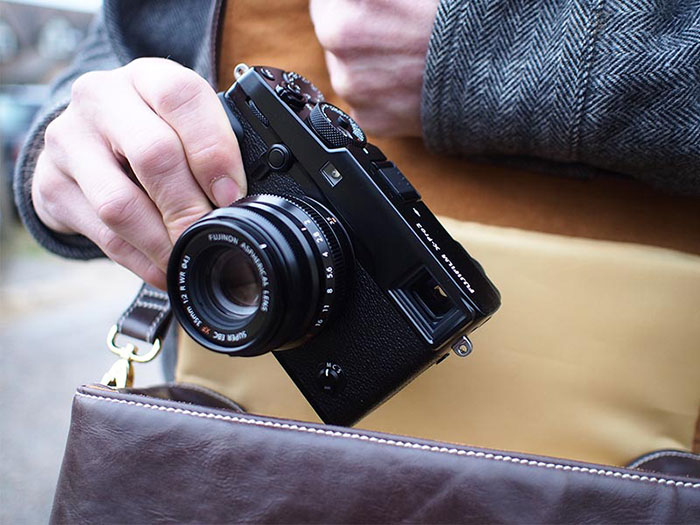
Principles of street photography
Today, social networks are full of mediocre and poor street photos. Merely aiming the subject with a lens does not make you a street photographer. Like other genres of photography, the method of composition and lighting has a significant impact on the output of the image. A good street photo needs a defined subject. Try to tell your story using the rules of composition. Create pictures that the audience pauses in front of and asks questions.
Morality and overcoming fear
Sometimes street photography can be annoying or unpleasant for subjects. Candidate photography (without prior knowledge of the subject and gesture) is usually done without the subject’s permission. For every photo you take, regardless of the beauty or charm of the photo, the subject may not be visible for any reason. Some subjects do not matter, but they mustn’t be in the picture for some subjects.
These are just some of the goal-setting shareware that you can use. Most people do this for reasons such as love of people or exploring and recording popular culture. The camera is a way to go back in time and enjoy the moments.
These pictures are valuable. When looking at pictures from the 1920s, 1950s, 1970s, or even fifteen years ago, what are the most compelling pictures?
Definitely, images that show culture and people. These images have a lot of cultural value, so they are attractive to everyone. Fear is one of the most difficult obstacles that novices have to overcome, and on the other hand, moral barriers can be more difficult.
But if you do street photography the right way, you will seldom face any obstacles. First of all, you need to be sure of what you are doing, and if someone asks you what you are doing, give them a firm answer. For example, you can say:
I am a photographer. I have started a project to record culture and people, and I think people are good subjects.
If they ask more questions, you can say you do not want to offend anyone and delete their pictures. If someone is following you for a photo, you do not have to be defensive or fighting. Try to stay calm no matter what. Try to behave normally. The more secretively you try to shoot, the weirder you look. The more ordinary you look, and the less you hide, the fewer people will suspect you.
Finally, try to start street photography in crowded places like the market; Because you are less visible in crowded places. This trick is a good way to start. Then you can maneuver in completely different situations.
Country Laws for Street Photography
Different countries have different laws for street photography, and in some countries, street photography is illegal without permission. In some countries or cities, street photography is generally impossible; While in some countries, the rules can be circumvented and ignored. Street photographers can only capture a candidate image in some countries if the subject’s face is not recognizable.
In the United States and the United Kingdom, privacy in public places does not make sense; This means that you can legally shoot any subject you want.
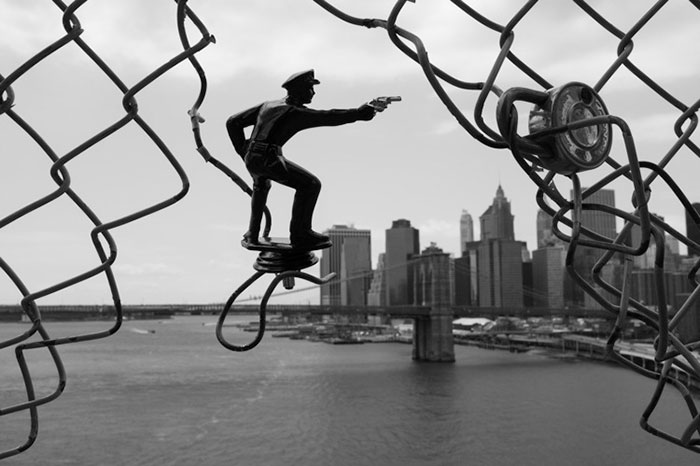
Laws of street photography in Iran
Street photography in Iran also has its own rules, and despite the restrictions, it can create beautiful images. Of course, street photography in Iran has become more difficult than in the past due to the current situation.
According to Kambiz Norouzi (lawyer and media expert) in an interview with IRNA, the following conditions must observe for street photography in Iran:
-
Photography in public spaces is free and does not require a permit: Photography in public spaces that everyone can enter is free. Of course, people’s privacy must always take into account. For example, streets, government organizations, and companies, corridors of ministries are public spaces and can be photographed.
-
Photography in semi-private and semi-public spaces is free of charge: semi-private spaces, including restaurants, theaters, concert halls, and sports halls, are defined in public administration regulations in the category of public places; But they are actually semi-private and semi-public. For example, a photographer should not photograph a theater without permission; Because it violates the material and spiritual value of the director.
-
Photography in private spaces is prohibited: in terms of photography, rights are subject to freedom of expression laws; But spaces such as houses, cars, and people’s faces fall into the category of private spaces, and photography of them is strictly forbidden. Also, photography of military and security places such as police stations, barracks, prisons, and buildings of the Ministry of Intelligence and places with a photo warning sign is prohibited by law.
-
Street photography is free: Despite the strictures of government institutions and the problems that exist for street photography in Iran, street photography in Iran is free. As long as the photographer is looking to photograph street spaces such as traffic, shops, street vendors, and anything but the face, street photography is free and can not be restricted.
-
The face is privacy: A street photographer has to get permission from that person to photograph people’s faces, which is one of the major problems for street photographers. Any photographer can only place a person in the focus of their photo with permission. Still, photography is not an obstacle in images where many faces are high and not accurately recognizable. For example, photographing the faces of individuals in political and civic gatherings is not prohibited.
Days without photos
Many days you come home with photos that are not worth keeping. This is normal, and you should not lose motivation. Good street photography is patient enough and waits for the opportunity to show itself. With a lot of work and practice, good results will achieve.
Subjects of street photography
As mentioned above, the subjects of street photography do not necessarily have to be humans. Of course, some people believe that street photography must include human subjects; But this is not necessarily the case.
For example, you can use shadows to capture thought-provoking images; Even if you can not see the human subject that creates the shadow. In the following, we will introduce some suitable subjects for street photography.
Distant subjects
If you still do not feel comfortable approaching subjects, shoot from a short distance. Of course, this does not mean capturing telephoto images but looking for attractive environmental perspectives that frame the subjects.
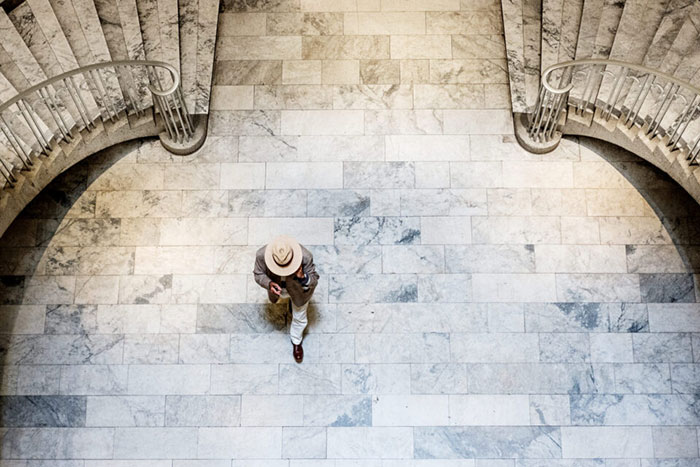
Should all subjects be candidates?
The answer to this question is yes. Subjects of street photography are candidates, But this genre has a lot of flexibility, and you can create street portraits in a non-candidate and fully conscious way.
You must communicate with the subject to capture street portraits. Communicating with a stranger may seem a little difficult at first; But in this way, you will meet interesting people. You can also greatly overcome your fears.
Another type of non-candidate photography usually occurs when you make eye contact with the subject. Of course, some believe that eye contact destroys the sense of instantaneity of the photo and changes the perspective. Still, if the subject notices your presence and looks at you for a moment, you can record his natural appearance. This method can add a bit of humor to the image.
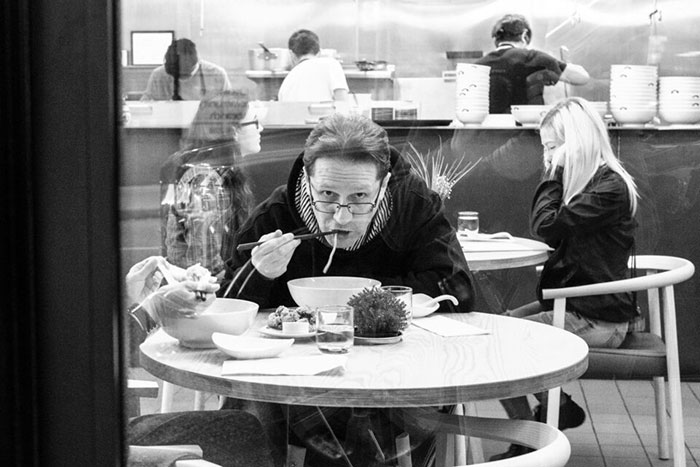
Photography of children
It is morally a little harder to take pictures of children. For example, some parents are conscientious about their children. To avoid getting angry with parents, try to get permission from children before photographing them.
If you have an interesting opportunity to capture a moment involving children, try to get permission from their parents and provide them with contact information. Many parents are happy to capture attractive images of their children; Because it is rare for them to take pictures of their child with professional equipment. If you do not see the child’s parents or caregivers around you, try to hide the children’s faces in the composition.
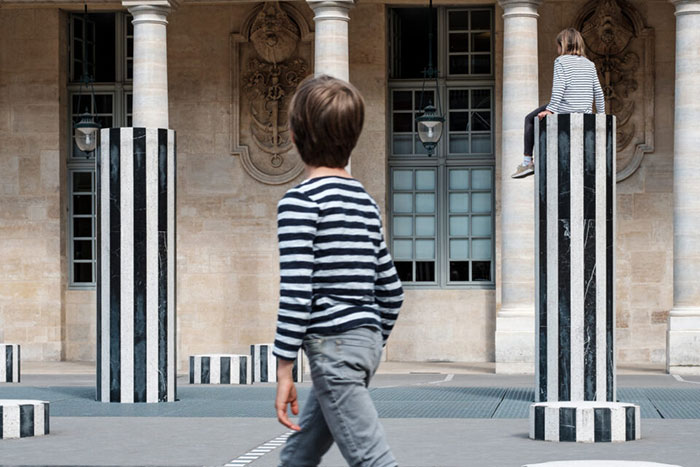
Photography of street musicians
Street musicians are accustomed to photography. Some of them play music for a living; As a result, you can give them an appreciation before photographing them. Then spend time shooting from different angles and playing with light. If you wish, you can send them photos later.
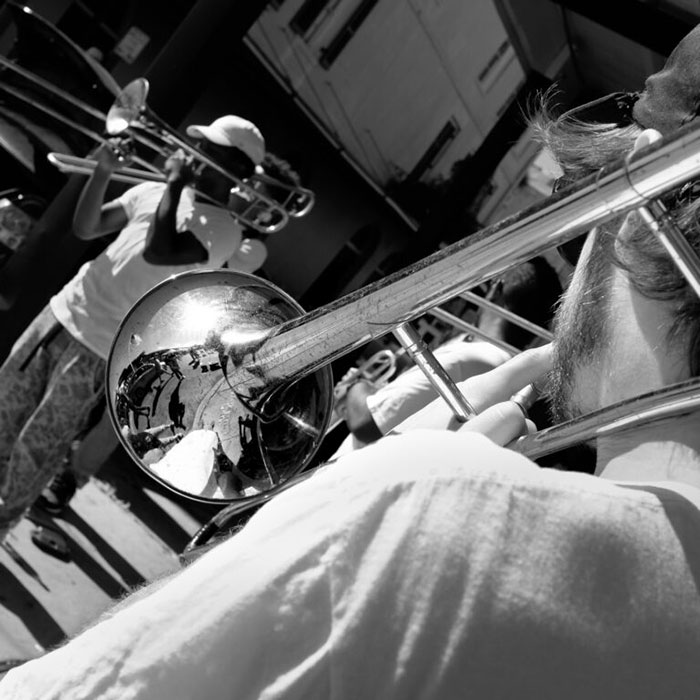
Photography behind glass
Many street photographers are afraid to face their subjects. Try to photograph the street from inside the building. The window is like a shield between you and the subject. Remember that if the subject notices, do not forget to smile.
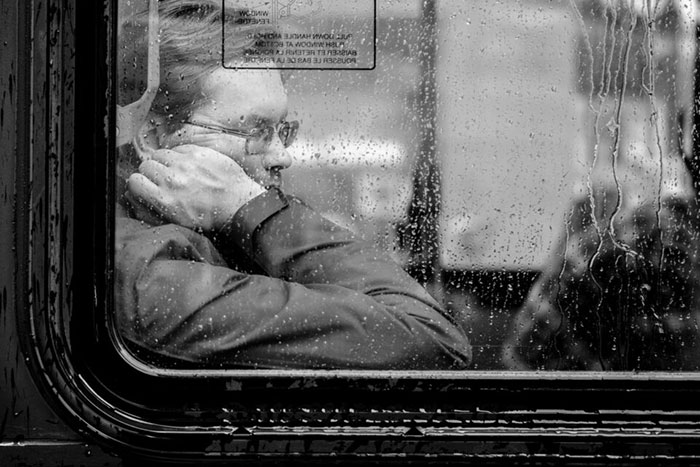
Behind-the-scenes photography
You do not necessarily need to photograph people’s faces. Behind-the-scenes photography is a great way to shoot without being seen. In rear photography, you can look for people in attractive clothes such as hats.
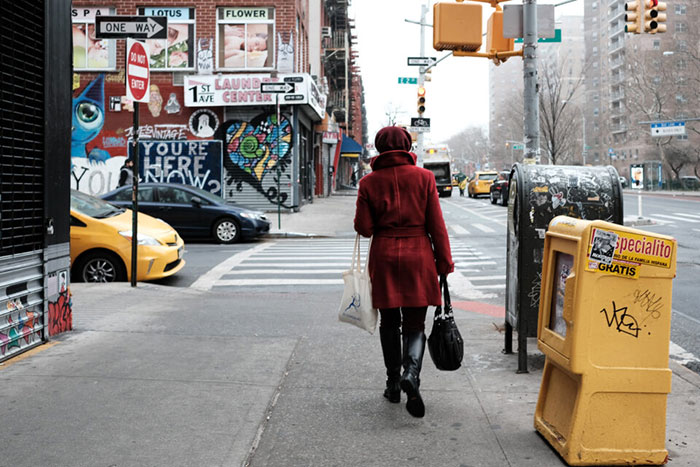
Photography of animals on the street
Photographing a cat or dog can be a good idea for street photography. When photographing animals, shoot from a wide-angle to achieve more attractive outputs.
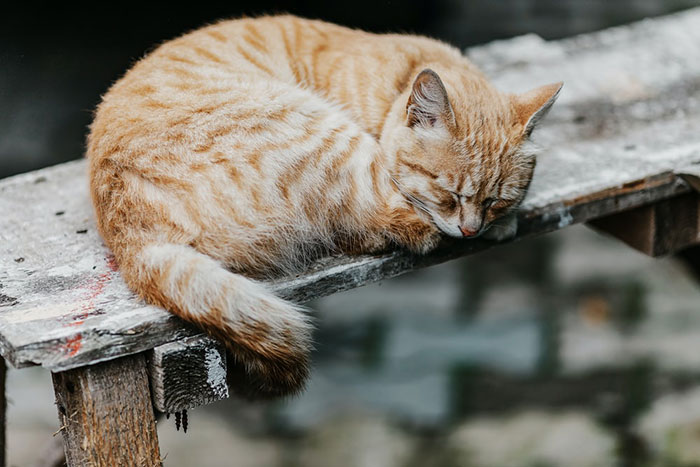
Silhouette subjects
Capturing silhouettes in street photography is a great way to capture subjects without having to be seen. First, look for strong backlights or bright windows that act as a backdrop. Then wait for the subject to pass in front of it.
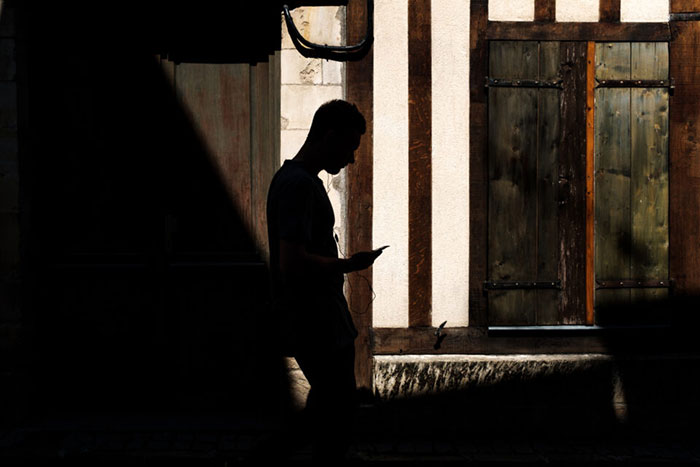
Self-portrait (self-portrait)
You can spend some time photographing yourself on the street. Self-portraits in photography can include recording reflections in mirrors, glazes, glass, or other street reflections.

Street photography pose
The gestures of the subjects in street photography and their body language convey a specific message and meaning. In street photography, subjects are usually unaware of capturing images and do not spend time posing. Still, recording subjects’ gestures also depend on the photographer’s skill in capturing moments at the right time and in the right lighting. The facial expressions of people and the way they move are what distinguish street photos. Without conveying emotions, the images look monotonous.
Street photography images can convey various emotions, including happiness, sadness, anger, fear, or any other type of emotion. You can also extract many emotions in the final editing stage. In street photography, you can pay attention to details such as the placement of the hands or even their texture. In addition to the face, hands can also be a means of conveying emotions.
You can also shoot accessories such as bracelets or necklaces in a closed view; But first, it is better to get a little closer to the subject, like his sunglasses, necklace, or bracelet. Most street photos are candidates, But you can ask the subjects to pose with their hands.

Important techniques of street photography
Every photographer has their their own method for street photography. There is no one-size-fits-all method, But some criteria must consider. Also, if you have been shooting in one style for a long time, it is better to be flexible with other photography methods and go out of your comfort zone.
Some photographers use a lot of bokeh in their images. This method is convenient; But you have to consider the candidate photography genre in which the subjects move at high speed; If you use f / 2.8 in this genre, you may lose focus and even ruin the photo. On the other hand, it is a bit difficult to photograph several subjects with different depths of field. By blurring the surroundings, you can remove the background and background of the image and help the meaning and narrative of the photo.
You also need to pay attention to the shutter speed.
In street photography, you need a high shutter speed to be able to record people’s movements. Shutter speeds of 1/250 per second are a good choice in the shade, and speeds of 1/400 and 1/500 are suitable for direct sunlight. In darker situations, you can use a speed of 1/160 and sometimes 1/125.
Now suppose you want to record the depth of field as much as possible. What settings are appropriate to achieve this result? The first step is to adjust the ISO. You should not be afraid to raise the ISO to higher numbers. Noise is not a bad thing in street photography. Test your camera at high ISOs. Do not do this only on the monitor and try to print the images. With the new cameras, you can easily work with ISO 1600, 3200, and even 6400.
With digital cameras like the Fuji X100, you can set your camera to ISO 400 in sunlight, ISO 800 in the shade, 1600 in the dark, 3200 in the light of day, and 6400 at night. You can be a little cautious with semi-professional and non-professional cameras; For example, ISO 3200 is suitable at night and 1600 at wolfhound.
The reason for using high ISO is high shutter speed for freezing motion and low aperture (high numbers like f / 8 and f / 11); As a result, there is enough depth of field in the photo.
You can also set your camera to shutter priority mode; Of course, you can shoot in manual mode; But shutter priority mode is recommended; Because it is possible to capture an image in direct sunlight and another image in the shadows. As a result, the required settings will be different, and the settings can not change at any time.
Instead, in indoor lighting situations or at night, you can use the manual mode, or if you are looking for surface depth of field, you can use the aperture priority mode at numbers like f / 2.8 and lower the ISO.
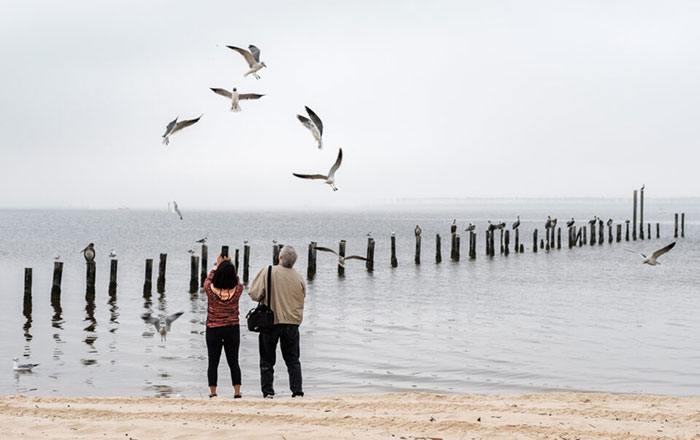
Composition and lighting
Composition in street photography is similar to composition in all genres of photography, But there are a few things to keep in mind. Combine your street photos like landscape photos. Evaluate the scene and then put the elements together.
For example, instead of combining a tree or a mountain, you may encounter a fire hydrant or ladder. The art of the street photographer is to put these elements together in the right way.
Sometimes the subject alone matters, and you want to look for the subject or blur the background, but this method is sometimes correct. Many novice photographers shoot 100% of the time this way, But this is a mistake.
You should look beyond the main subject and see if combining it with other elements achieves a more complex perspective. Can you create meaningful relationships between subjects? You can decide which element is most important to you and put it in the foreground.
You should also pay attention to the direction of the light and the position of the subject.
For example, what does light have to do with the background? What color is it, and how many light sources are there? These points should consider in all genres of photography, But you should note that there is no such thing as the best time or the best lighting in street photography. Even bright midday light or dim night light can create beautiful images. As a result, you can maneuver the light in any situation.
The beauty of street photography depends on how fast it responds to light.
Some photographers use portable flash to illuminate subjects and separate them from the background. This can give a great view of the image; But keep in mind that flashing a flashlight as a stranger can be unpleasant; Especially if the flashlight is intense, it can destroy the sense of authenticity of the photo. Of course, this result is pleasant for some photographers. Ultimately, everything depends on your choice.

Area focus
It is easy to learn to focus on an area, but it is difficult to master it. Area focus is a way to use manual focus. By mastering area focus, you can achieve high-resolution images in a variety of situations.
The goal is to adjust the focus of the camera to a certain distance. You can usually set this distance between 2.5 and 3 meters, the most common distance for capturing subjects.
Then, by placing the subject in this range, you can click on the shutter button and take your photo without wasting time. For example, you can use an area focus of 35 mm or more and increase this value to 50 mm for clear days. It is more difficult to focus on areas more than 50 mm.
The focus of an area may be easily disturbed at first.
If you do not adjust the distance correctly, you will lose all focus. Focusing on the area in sunlight is easier; Because with a focal length of 35 mm or a wider distance and an aperture of f / 11 to f / 16, a wide depth of field is obtained.
As a result, if you lose a little focus, the main subjects retain their sharpness. You should practice more for darker positions and apertures such as f / 2. Achieving regional focus is more difficult in this situation but only requires practice.
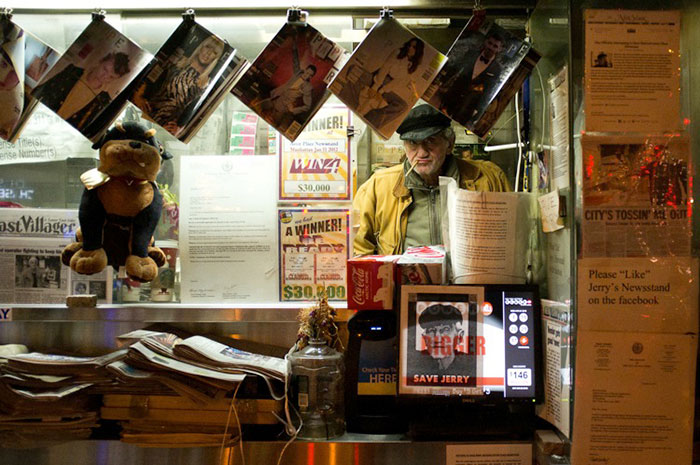
Edit street photos
Photo editing is halfway to becoming a good street photographer. You may not pay much attention to detail when you go out to photograph, but when you edit, you start thinking. In this situation, you can implement different themes and ideas on your photos. You can also combine similar images to achieve a better story. In the editing stage, you can achieve your desired style, both appearance, and content. For this reason, when you spend editing, it will help you later in photography.
Try to put together images that have the same theme. Look for coherence and adaptation in your works and create a collection of them. Try adding or deleting images or reordering them in your collections.
Expertly, when editing a photo, you should pay attention to how important realism is for this genre. Many photographers enjoy surreal moments, But street photography is largely based on realism. Similarly, an over-edited image does not work well. You do not need to edit all the details and shadows of the photo.
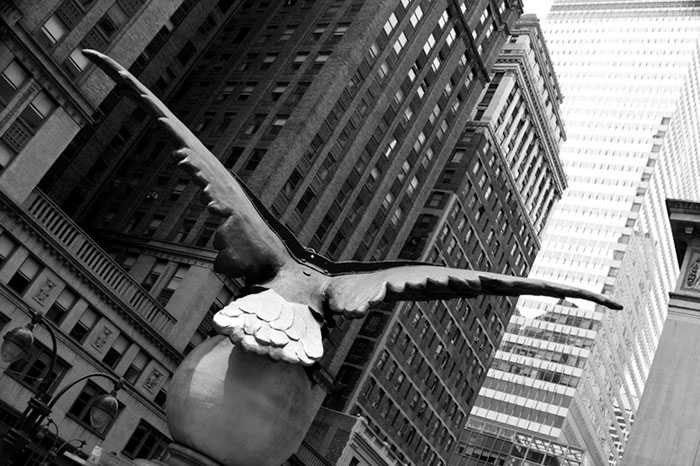
Content and concept of street photography
The hardest step in street photography is finding the subject. What do you want to photograph and why? What do you want your photo to look like? Looking at the works of prominent artists and street photographers, you will notice the coherence and orderliness in their work.
These connections may have been made over a period of a lifetime and may have changed at different times in their lives; But in any case, these connections and order are seen in their work.
The more you photograph, the more you will understand your interests. You are attracted to your favorite photos and subjects, and you try to show this interest in your photography. Ask yourself this question: What are you trying to draw? Sometimes you need a lot of time to develop your ideas.
Studying the works of prominent street photographers
You will learn a lot by researching the works of prominent street photographers. This is what you need to do from the beginning to inspire and understand your abilities. For example, compare the work of photographers in different situations, such as urban and rural areas. See their books; Because learning based on the format of the book is essential. There are several photo books on the market that you can start with.

A photo of Henri Cartier-Bresson, the father of street photography
On the other hand, pay special attention to the works of photographers that you are not interested in. At first glance, many people reject the work of these photographers without looking deeply.
The problem with street photography is that it may seem strange and different, and you may not be able to understand the real feeling of a photographer just by looking at a few photos. Therefore, it is better to read about the history and geography of the photographer.
Try to take a deep look at their art portfolio and try to understand their message. Sometimes, after studying and looking deeply, you will find that you are interested in the photographer’s works and have seen them from a different perspective.
Prominent street photographers include:
- Henri Cartier Bresson
- Garry Winogrand
- Robert Frank
- Helen Levitt
- Lee Friedlander
- William Eggleston
- Walker Evans
- David Moriyama
- Martin Parr
- Elliot Erwitt
- Joel Meyerowitz
- Mary Ellen Mark
- Bruce Davidson
- Saul Leiter
- Trent Parke
- Alex Webb
- Vivian Maier
- Bruce Gilden
Concluding remarks
When you first enter street photography, do not pay too much attention to definitions; Instead, try to portray street life from a unique perspective—experience different focal lengths to get what you want. Play with light and, most importantly, entertain yourself.
If you want to master photography skills and capture emotions, gestures, and narrative moments, street photography is the right choice for you. In addition, after a while, you will notice an improvement in your photography skills.
As a result, you can apply what you have learned in street photography to other genres of your choice in photography.












